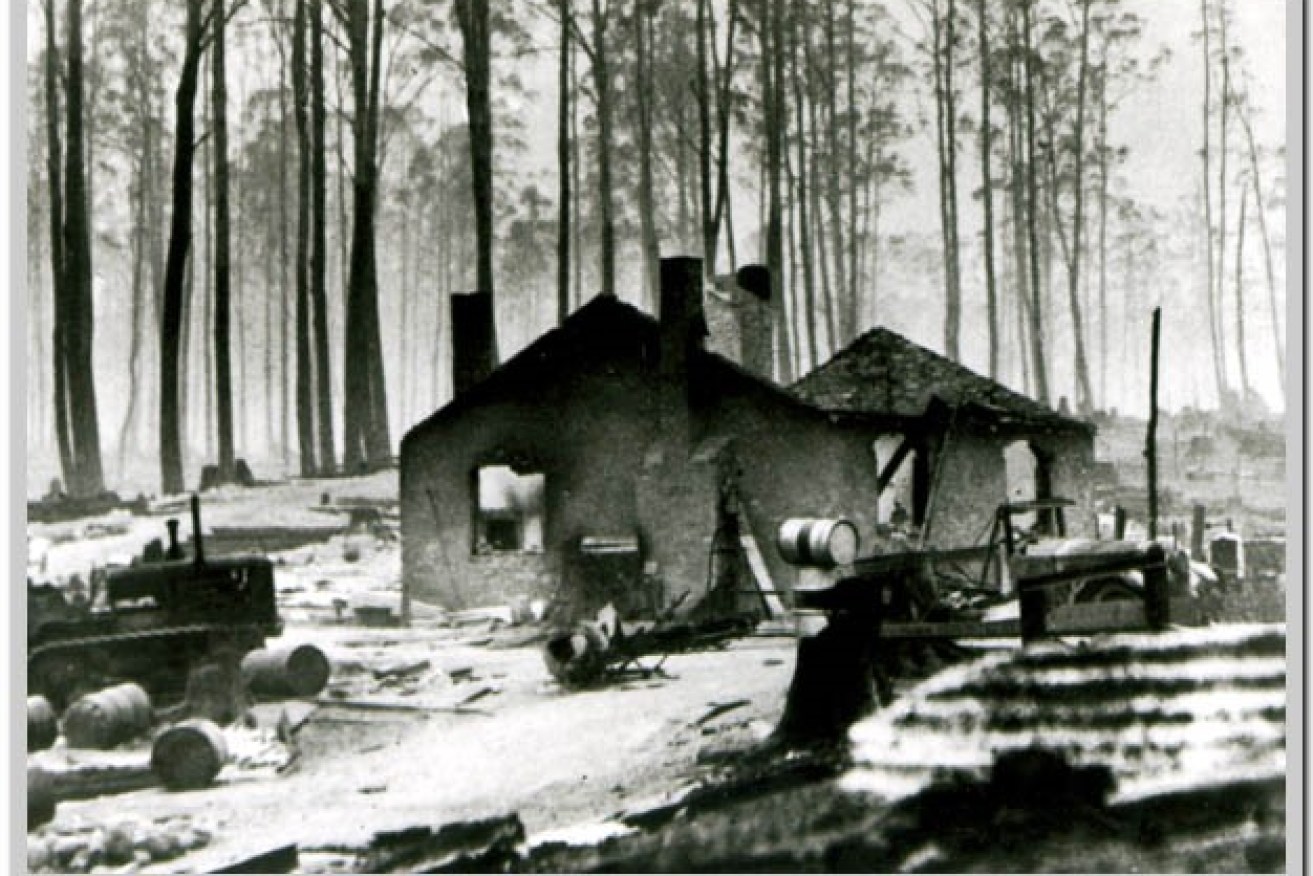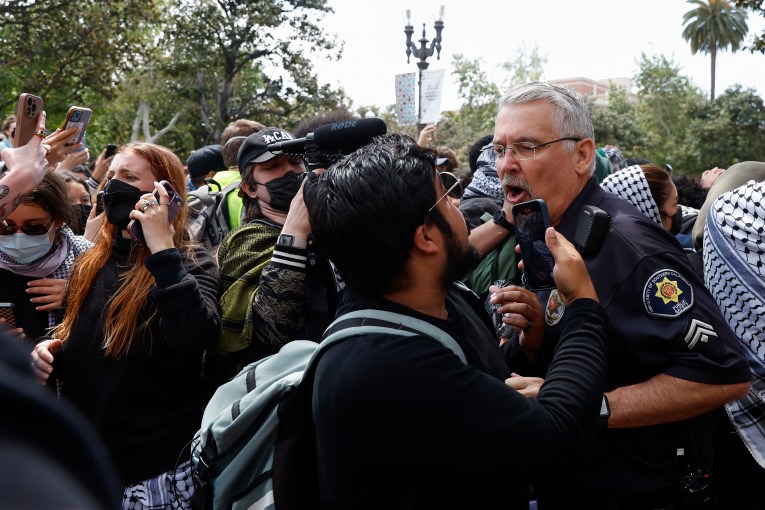On this day in 1939: Black Friday fires rage across Victoria


A house used for shelter in the town of Matlock during the Black Friday fires. Photo: Victorian government
Before Friday the 13th conjured up images of bad slasher films, it meant something far more horrific for Victorians.
This day in January 1939 was one of the darkest in the state’s history.
Following a long drought across the state, record-breaking temperatures and high winds, flames – some burning for weeks – took hold of bush and farms in what the newspapers at the time described as a “ring of bushfire”.
The horrific blazes killed 71 people and destroyed entire communities.
New South Wales burned too, though not as severely.

Front page of The Argus, Monday 16 January 1939. Photo: Trove
Amid fierce winds on January 13, several of the fires – which had been burning since December – were fanned into a massive fire front.
Trying to protect themselves, some bushmen and graziers lit extra fires, which quickly got out of control and spread.
Most of the damage was felt in the mountain and alpine areas in the northeast and around the southwest coast.

Four men standing on the charred remnants of the trestle railway bridge.
“From Palm Beach to Port Hacking, and as far up the Blue Mountains as Mt Victoria, a complete ring of bushfires surrounded Sydney,” The Sydney Morning Herald wrote.
Eventually, the rains arrived and helped extinguish the flames.
Until Black Saturday, which killed 180 people, the Black Friday fires were regarded as the worst in Victoria’s history.
Three weeks after they ended, a Royal Commission was called with Judge Leonard E B Stretton selected to lead the inquiry.

The town of Woods Point after the Black Friday bushfires.
“The soft carpet of the forest floor was gone; the bone-dry litter crackled underfoot; dry heat and hot dry winds worked upon a land already dry, to suck from it the last, least drop of moisture,” Judge Stretton wrote in the introduction.
“It will appear that no one cause may properly be said to have been the sole cause,” he wrote. But he added that the fires were “lit by the hand of man”.
The royal commission played a significant role in increasing bushfire awareness and led to major changes in forest management and the founding of the Country Fire Authority.
The environmental effects can still be seen today, with some of the burnt dead trees still standing.








